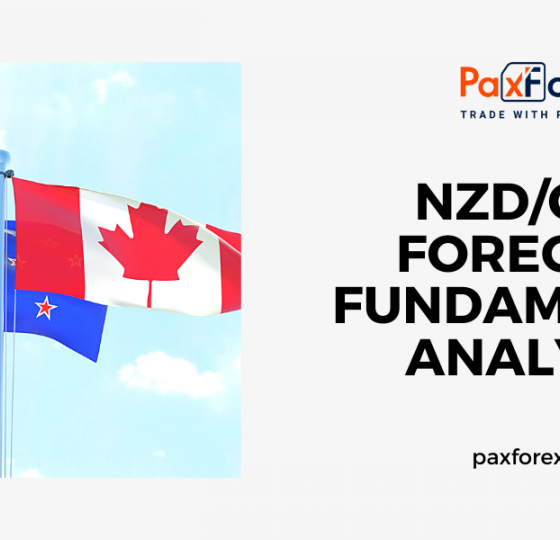New tariffs kicked in yesterday as the US and China both implemented their previously announced measures. China opted to implement tariffs to only about one-third of the 5,000 goods on the list with the rest scheduled for December 15th 2019. The US has also delayed tariffs on plenty of consumer goods until that day in order to bridge the key shopping season in the US. Chinese manufacturing data for August surprised to the upside and expanded against expectations for a contraction. This helped keep the Australian Dollar, the top Chinese Yuan proxy trade, stable and the AUDJPY at strong support levels. Australian manufacturing data for August also expanded which further added bullish momentum to the currency. Can this currency pair use support levels to push higher? This morning’s fundamental analysis will take a look at the upside potential as well as downside risk of this currency pair.
Japanese data released this morning showed a steep drop in second-quarter in company profits with a contraction in company spending excluding software. In contrast, Australian company profits for the same period rose. Adding to downside pressures for the Japanese Yen was a downward revision to the final August Manufacturing PMI which now shows a bigger contraction than previously reported. Lending support to the Japanese currency was the inflow of safe haven capital after the implementation of the latest round of tariffs as the Bank of Japan is closely monitoring the strength of its currency. Is a short-covering in the AUDJPY brewing? Subscribe to the PaxForex Daily Fundamental Analysis and earn more pips per trade.
Here are the key factors to keep in mind today for Australian Dollar trades:
- Australian AiG Performance of Manufacturing Index: The Australian AiG Performance of Manufacturing Index for August was reported at 53.1. Forex traders can compare this to the Australian AiG Performance of Manufacturing Index for July which was reported at 51.3.
- Australian CBA Manufacturing PMI: The Final Australian CBA Manufacturing PMI for August was reported at 50.9. Economists predicted a figure of 51.4. Forex traders can compare this to the previous Australian CBA Manufacturing PMI for August which was reported at 51.6.
- Australian CoreLogic House Prices: Australian CoreLogic House Prices for August increased by 1.0% monthly. Forex traders can compare this to Australian CoreLogic House Prices for July which increased by 0.1% monthly.
- Australian TD Securities Inflation: Australian TD Securities Inflation for August was reported flat at 0.0% monthly and increased by 1.4% annualized. Forex traders can compare this to Australian TD Securities Inflation for July which increased by 0.3% monthly and by 1.8% annualized.
- Australian Consumer Inflation Expectations: Australian Consumer Inflation Expectations for September increased by 3.2% annualized. Forex traders can compare this to Australian Consumer Inflation Expectations for August which increased by 3.5% annualized.
- Australian Inventories and Company Operating Profits: Australian Inventories for the second-quarter decreased by 0.9% quarterly and Australian Company Operating Profits increased by 4.5% quarterly. Economists predicted an increase of 0.2% and of 2.0%. Forex traders can compare this to Australian Inventories for the first-quarter which increased by 0.7% quarterly and to Australian Company Operating Profits which increased by 1.7% quarterly. Company Pre-Tax Profits for the second-quarter decreased by 0.3% quarterly. Forex traders can compare this to Company Pre-Tax Profits for the first-quarter which increased by 2.0% quarterly.
- Australian ANZ Job Advertisements: Australian ANZ Job Advertisements for August decreased by 2.8% monthly. Forex traders can compare this to Australian ANZ Job Advertisements for July which increased by 0.8% monthly.
- Chinese Caixin Manufacturing PMI: The Chinese Caixin Manufacturing PMI for August was reported at 50.4. Economists predicted a figure of 49.8. Forex traders can compare this to the Chinese Caixin Manufacturing PMI for July which was reported at 49.9.
- Australian RBA Commodity Index: The Australian RBA Commodity Index for August increased by 6.2% annualized. Forex traders can compare this to the Australian RBA Commodity Index for July which increased by 15.0% annualized.
Here are the key factors to keep in mind today for Japanese Yen trades:
- Japanese Company Profits and Japanese Company Sales: Japanese Company Profits for the second-quarter decreased by 12.0% annualized and Japanese Company Sales increased by 0.4% annualized. Forex traders can compare this to Japanese Company Profits for the first-quarter which increased by 10.3% annualized and to Japanese Company Sales which increased by 3.0% annualized. Japanese Capital Spending for the second-quarter increased by 1.9% annualized and Japanese Capital Spending excluding Software decreased by 1.7% annualized. Forex traders can compare this to Japanese Capital Spending for the first-quarter which increased by 6.1% annualized and to Japanese Capital Spending excluding Software which increased by 6.9% annualized.
- Japanese Manufacturing PMI: The Final Japanese Manufacturing PMI for August was reported at 49.3. Forex traders can compare this to the previous Japanese Manufacturing PMI August which was reported at 49.5.
- Japanese Vehicle Sales: Japanese Vehicle Sales for August increased by 4.0% annualized. Forex traders can compare this to Japanese Vehicle Sales for July which increased by 6.7% annualized.
Should price action for the AUDJPY remain inside the or breakout above the 71.100 to 71.800 zone the following trade set-up is recommended:
- Timeframe: D1
- Recommendation: Long Position
- Entry Level: Long Position @ 71.450
- Take Profit Zone: 73.900– 74.400
- Stop Loss Level: 70.750
Should price action for the AUDJPY breakdown below 71.100 the following trade set-up is recommended:
- Timeframe: D1
- Recommendation: Short Position
- Entry Level: Short Position @ 70.750
- Take Profit Zone: 69.600 – 69.950
- Stop Loss Level: 71.100
Open your PaxForex Trading Account now and add this currency pair to your forex portfolio. How to trade forex can be a tough challenge for new traders, but at PaxForex it doesn’t have to be! Our multi-lingual support team is here for you 24/5 and our expert analysts deliver you the most profitable trading signals. Join us now and find out why more profitable forex traders join PaxForex every day!
We are one of the fastest growing Forex Brokers in the Market. Trade with PaxForex to get the full Forex Trading experience which is based on...
- The Reliability on all Assets in the Market
- Trusted Worldwide for over a Decade
- Live Multi-Lingual Online Support 24/5













